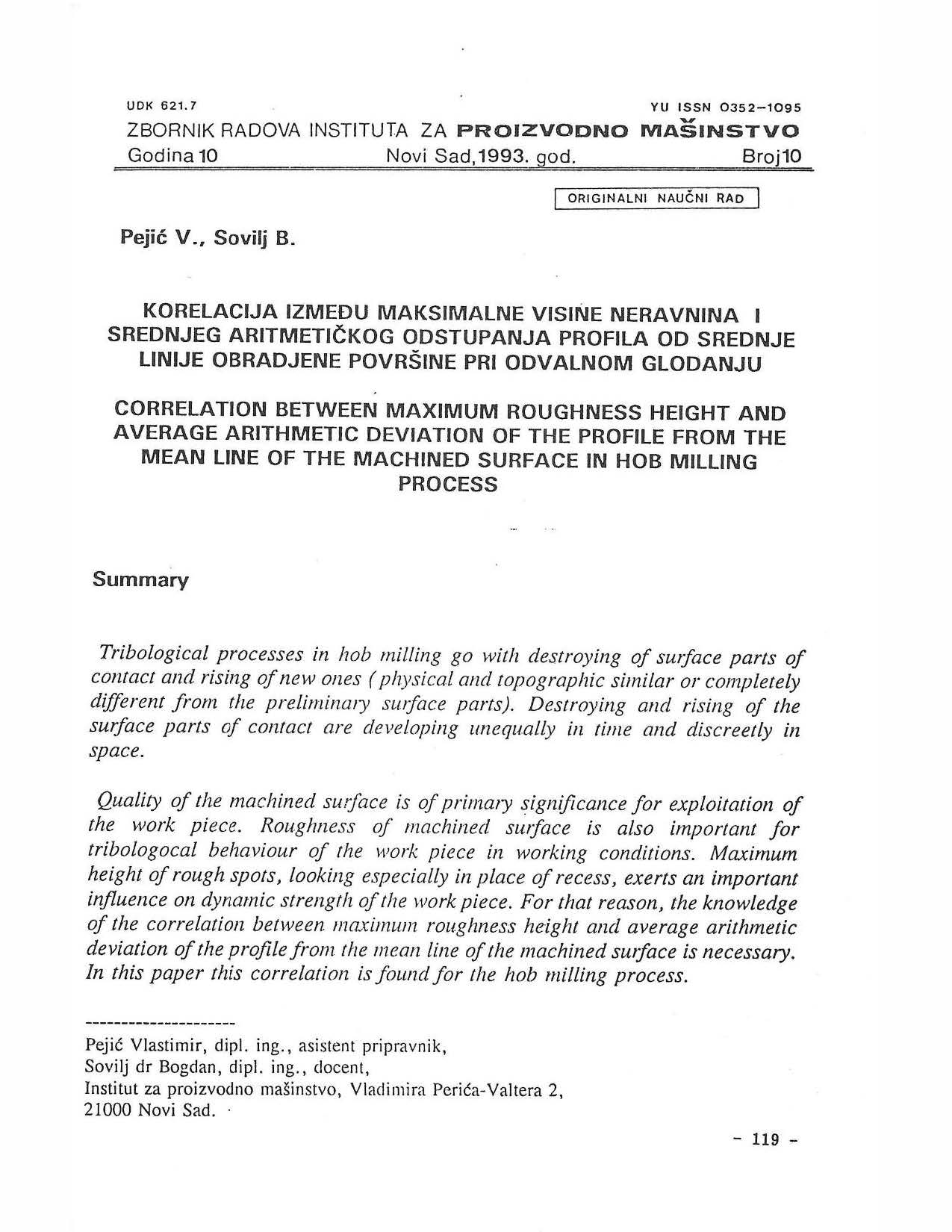The correlation between the maximum roughness height and the average arithmetic deviation of the profile from the mean line of the machined surface in hob milling process

Published 1993-12-01
abstract views: 13 // FULL TEXT ARTICLE (PDF): 7
Keywords
- milling,
- surface contact,
- quality
How to Cite
Copyright (c) 2023 Journal of Production Engineering

This work is licensed under a Creative Commons Attribution 4.0 International License.
Abstract
Tribological processes in hob milling involve the destruction of surface contact parts and the emergence of new ones, which may be physically and topographically similar or entirely different from the original surface components. The destruction and emergence of these contact surface parts occur unevenly over time and discretely across space. The quality of the machined surface is of paramount importance for the workpiece's durability. The roughness of the machined surface also significantly influences the workpiece's tribological behavior under working conditions. The maximum height of rough spots, especially in recessed areas, plays a crucial role in the dynamic strength of the workpiece. Therefore, understanding the correlation between the maximum roughness height and the average arithmetic deviation of the profile from the mean line of the machined surface is essential. This paper aims to establish this correlation for the hob milling process.

